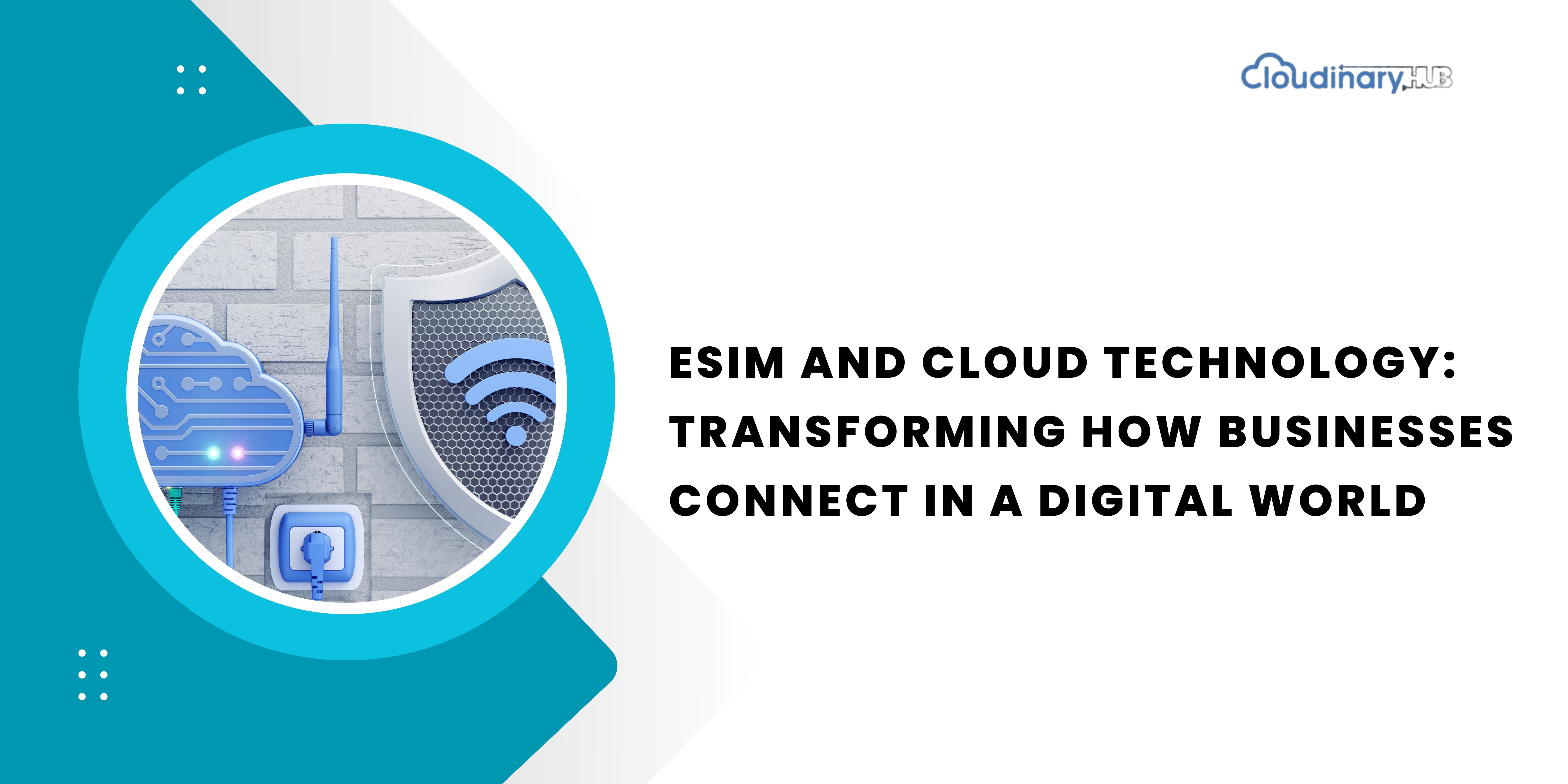Imagine a future in which all of your business gadgets, from trucks to sensors to smartphones, can communicate seamlessly across cities, nations, and even continents without the need for actual SIM cards. Sounds futuristic, right? With eSIMs and cloud technologies, that future is now here, and it’s a game changer for corporate connection.
In today’s fast-paced, digital-first society, maintaining seamless connectivity across all devices is critical. However, standard SIM cards are no longer effective. To change networks, you do not need to swap out the eSIM, which is incorporated directly in your smartphone. Instead, it’s cloud-programmable, allowing you to handle everything remotely and flexibly—no more shipping SIM cards to faraway places, and no more downtime.
The Real Business Benefits of eSIM and Cloud Technology
Let’s look at what makes eSIM and cloud integration so strong.
- Remote Management: eSIMs allow you to control everything remotely. Have gadgets diffused throughout several regions? Update, troubleshoot, and configure them all in one spot.
- Scalability: eSIMs make scaling a snap. Need to add hundreds of devices? It’s as simple as a software update.
- Global Connectivity: Do you operate internationally? eSIMs free you from the constraints imposed by local SIM carriers. Switch networks as required, without causing physical modifications to your equipment.
Let’s assume you own a logistics firm. You have thousands of tracking devices distributed throughout the globe, each requiring a network. With eSIM and the cloud, you can manage everything centrally, save money on physical equipment, and quickly deploy on a vast scale.
Real-World Examples and Case Studies
According to Omdia’s 2021 IoT Enterprise Survey, 90% of organisations feel that IoT is central to their digital transformation strategies. It provides a wide network of linked devices and sensors that collect data, shifting the business from reactive to proactive.
Companies report increased efficiency and productivity as a result of IoT implementation. IoT’s capacity to connect the real and digital worlds creates new revenue sources, broadens market reach, and improves user experiences.
Read more : https://www.airtel.in/b2b/insights/blogs/iot-esim-how-it-works-functionality-use-cases/
Why Quantitative Data Makes an Impact
Adding some real data allows us to see the bigger picture. According to Gartner, firms who use eSIMs claim a 40% reduction in manual activities and a 25% quicker deployment of new devices. That is significant when attempting to grow or simplify operations. These figures demonstrate that this is more than just theory; it is a tried-and-true method for operating more efficiently.
Expert Insights to Strengthen the Case
The advent of embedded SIMs marks the end of the long-standing proprietary relationship between mobile network providers and devices, promoting interoperability and dramatically simplifying IoT connectivity.
Nick Earle, CEO of Eseye, an IoT connection Solutions firm, outlines eSIM’s significant influence on the industry, not just in terms of connection, but also in terms of device design, management, and operations.
Read more on : https://www.iot-now.com/2023/06/21/131821-expert-opinion-esim-is-forcing-a-device-first-approach-to-iot
Overcoming Challenges: What You Should Know
Of course, not everything goes smoothly. eSIMs and cloud integration, like any other technology, present obstacles.
| Challenge | Details | Solutions |
| Security | Cloud integration can introduce new vulnerabilities. | Implement strong encryption and continuous monitoring. |
| Network Reliance | eSIMs provide flexibility, but connectivity quality depends on the provider. | Choose reliable network providers and have backup options. |
| Initial Investment | Transitioning to eSIMs and cloud solutions requires upfront costs. | Focus on long-term ROI, which often outweighs initial costs. |
This table summarises the issues connected with eSIMs , cloud integration and proposes methods to solve them.
Looking Ahead: The Future of eSIM and Cloud
So, where’s this going? With 5G on the rise and IoT devices increasing, the requirement for flexible, scalable connection will only increase. eSIM and cloud technologies are only the beginning. Industry experts expect that AI will soon allow eSIM devices to automatically switch to the best provider depending on real-time variables such as pricing or signal quality. Imagine a gadget that picks the finest network wherever it goes—that is the future we are headed for.
Wrapping It Up
eSIM and cloud technologies are redefining how businesses manage connection, reshaping how we connect and operate devices across several sectors. From logistics to smart cities, these solutions prioritise flexibility, scalability, and cost-efficiency. If you’re considering digital transformation, think about this formidable duo—they might be the missing piece in your connection jigsaw.
So what do you think? Is your organization planning on implementing eSIM with cloud technology?

